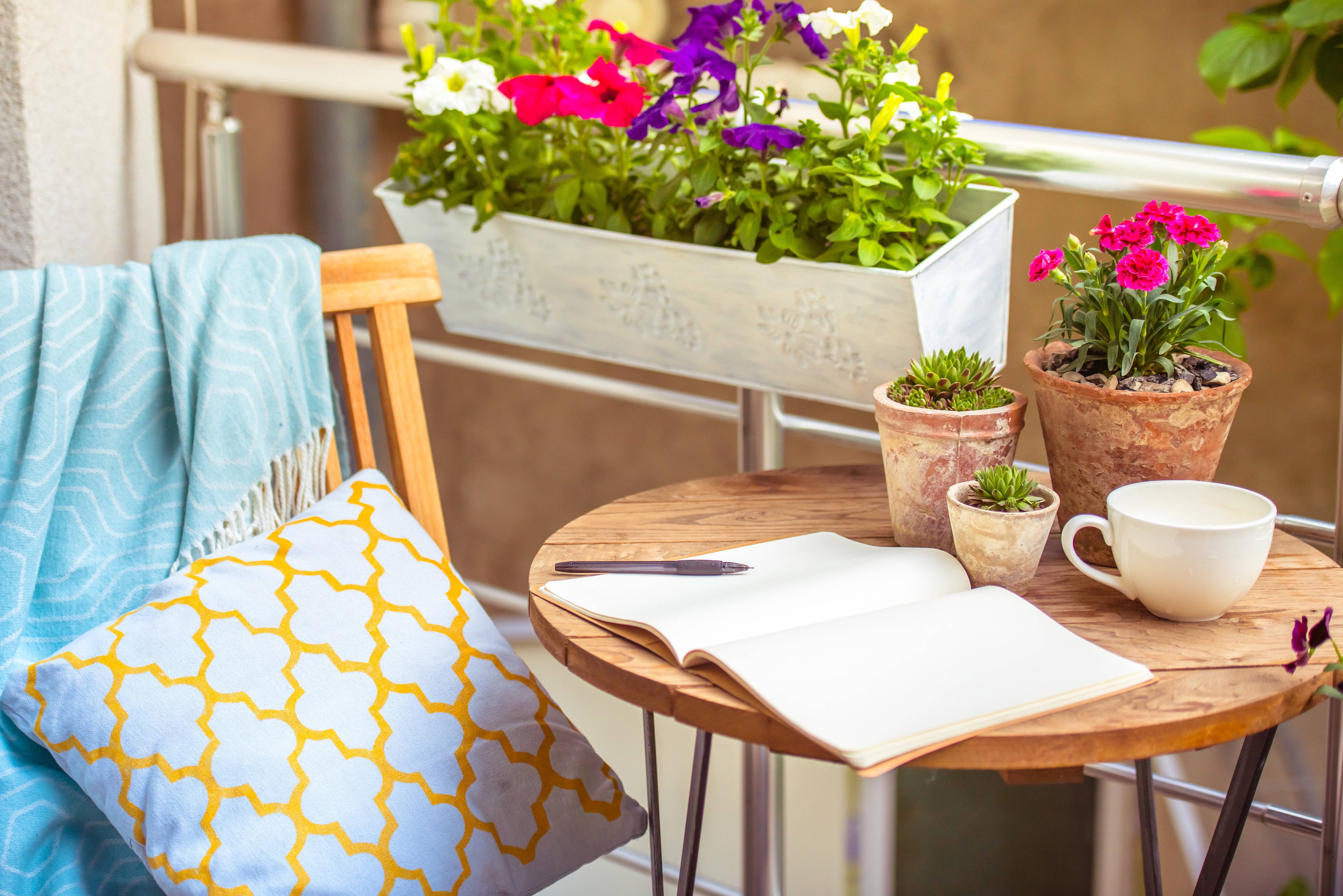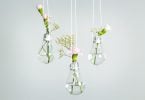Whether you’re a city dweller or you’re renting and don’t have permission to tear up the yard, your lack of fertile ground doesn’t have to mean the end of your gardening dreams. If you have a balcony, patio, or even some nice windowsills, you can turn small spaces into beautiful gardens quite easily. So fine-tune your green thumb and get ready to pot some plants! Here are a few tips to get you started.
Decide what you want to grow
Are you hoping for lettuce and parsley, or would you prefer something decorative? The possibilities are nearly endless and the most creative Urban Balcony Gardeners out there have managed to grow a significant amount of food in small spaces. If you choose this route, there are certain types of plants that will really thrive in space-limited situations while others will struggle — but determining whether you are gardening food or decorative flair will help you take the next steps, since growing a succulent garden or flower boxes will require a different set of supplies. Get your home ready for spring with a mix — some herbs in the windows and tall, leafy plants for decoration.
Determine what plants are appropriate for your climate and sun exposure
How much sun exposure does your balcony or patio get, and during what times of day? Are your plants going to be exposed to a lot of wind and weather like natural rain, or is the area fairly protected? The degree to which you control your plant’s exposure can help inform the species you choose. Tomato plants, for example, need direct sun — whereas many types of flowers can only handle a certain number of hours before their petals and leaves will burn. Consider temperature and humidity as well: a succulent garden will thrive in a dry, hot climate but not in a cool, humid one.
Give them what they need
“One size fits all” does not apply to plants. Be sure to choose pots and soil that are suited for the plants you are cultivating — ample drainage and a more sandy soil for succulents and cacti, food-safe, moisture-retaining soil with nutrients for herbs, lettuce, or other crop plants, and so on. These days, most plants come with instructions on their tag — follow them, and your plants will be happy!
Get creative with color and furniture
Most likely, you aren’t just looking for functional containers — you want something that is attractive, too. Get creative with repurposed containers like antique buckets or fruit crates, use gold leaf paint to spice up some tin pails, and use the plants as part of an overall intention. What purpose are they serving on your balcony, windowsill, or patio? Are you creating a space where you want to spend time, or are these plants more functional? A comfortable wicker chair and some pillows, paired with an end table and unevenly layered plants, can create a cozy spot for reading and drinking tea. Or if your balcony is less than private, use taller plants to create a visual screen for your patio dining set once you take it out of your winter storage facility. If your focus is on food, worry less about furniture and more about creating a “landscape” that will best utilize sun exposure for the varying plants. Creative use of leveling and shelves can help you maximize your space!
Don’t just think horizontally
Hanging plants, wall space, and even stacked shelves can be an efficient way to maximize a small space, whether indoor or on your balcony. Find DIY instructions for a vertical herb garden using an old pallet, or hang a series of globes with succulents for a more decorative feel. If you have a solid green thumb, you might even consider coaxing an ivy to grow across your wall!
Gardening inside? Absolutely possible
If you aren’t fortunate to be gardening on your balcony or terrace, fear not — you can still create a mecca of greenery in your apartment. On the windowsills with the most light, long and narrow succulent gardens provide an interesting accent that requires very little maintenance (just don’t overwater). Hang a Potheos or position a Snake Plant in areas that don’t get too much sun, and they will do double-duty by also cleaning toxins from the air.
Plants will make your home feel cozy and fresh, no matter where you put them. Happy spring, and happy gardening!








